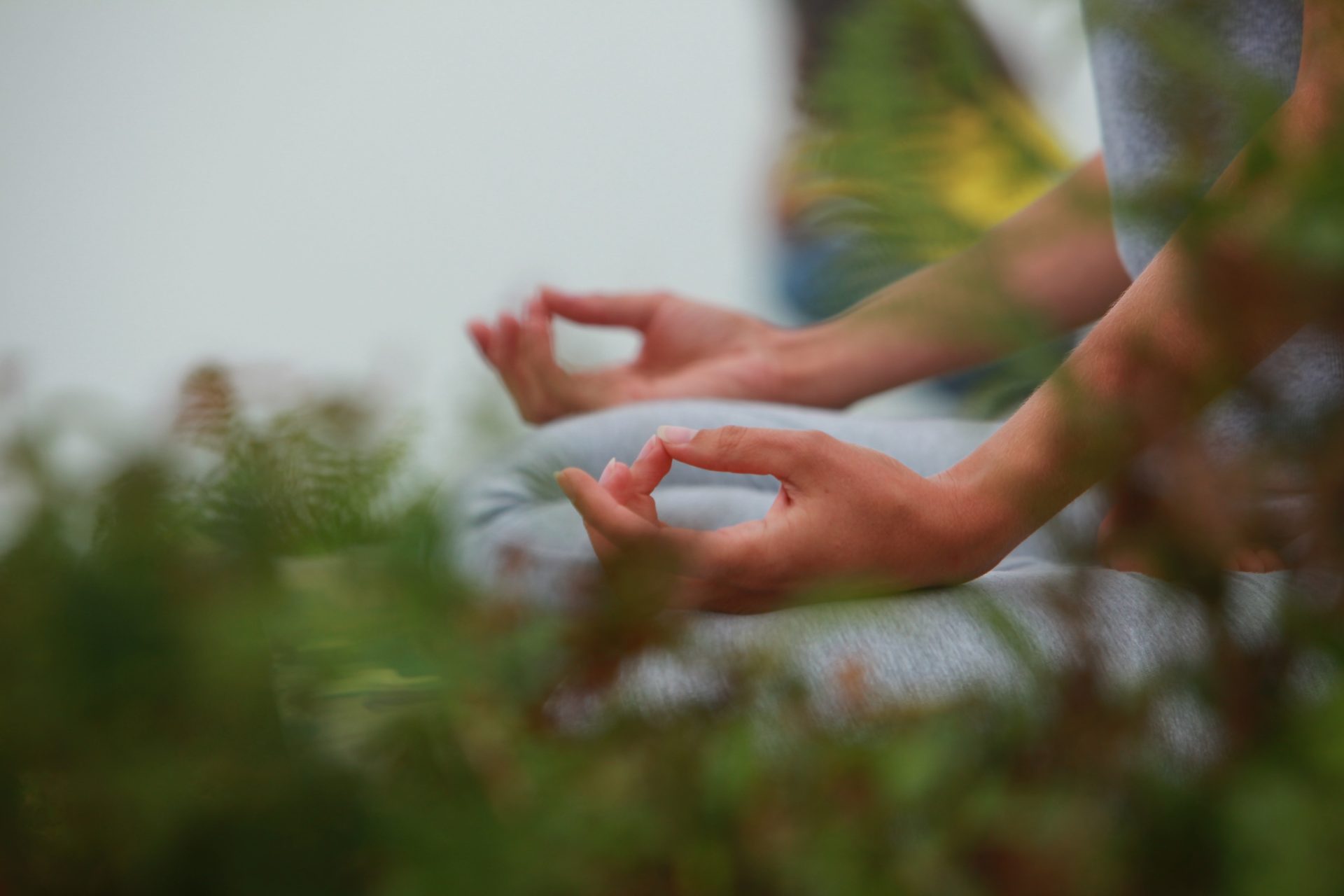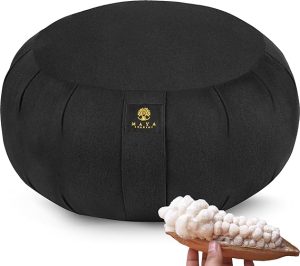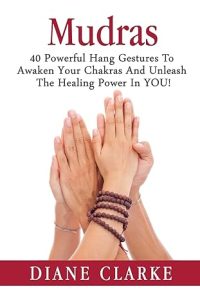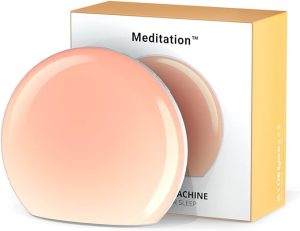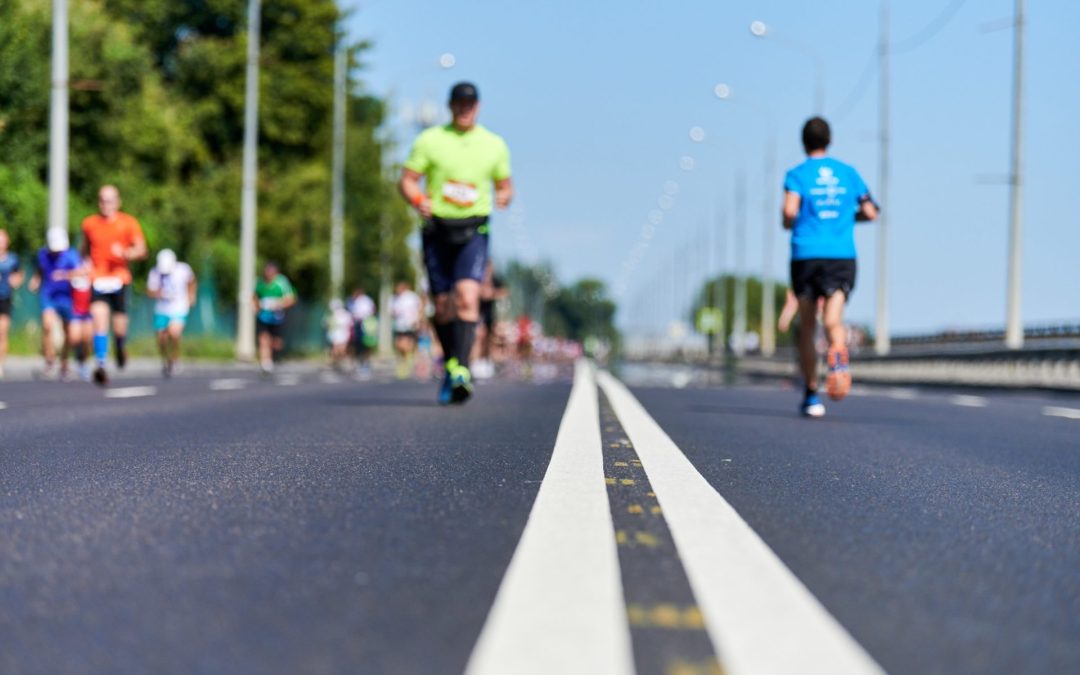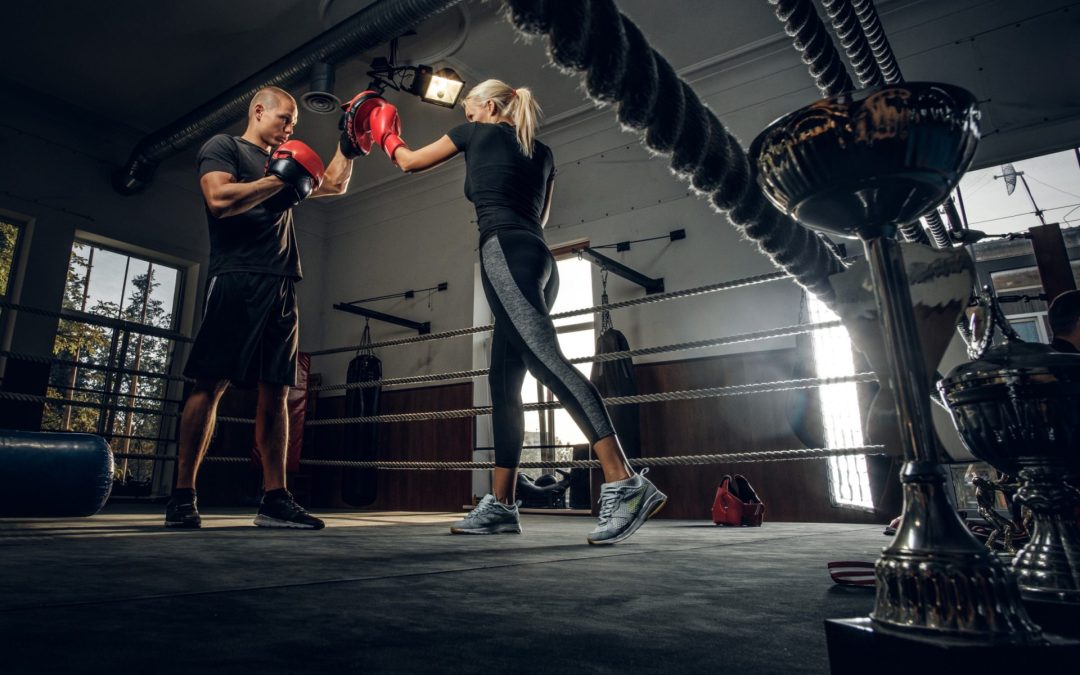Imagine if the mere positioning of your hands could unlock a realm of mental clarity, physical well-being, and spiritual balance. Welcome to the fascinating world of hand mudras – the ancient practice that does just that.
Often seen in the context of yoga and meditation, these hand gestures are more than just poses; they’re believed to influence the flow of energy in the body and mind.
Let’s embark on a journey through the intricate world of hand mudras and discover how these simple gestures may hold the key to a wealth of possibilities.
What are Hand Mudras?
The term “mudra” translates to “seal” or “gesture” in Sanskrit. In the realm of yoga and meditation, mudras are specific hand positions, each with its unique symbolism and purpose.
Each hand mudra is a distinctly specific position of the fingers and hands, believed to have distinct effects on the body and mind.
The philosophy behind these gestures is grounded in the concept that different areas of the hands are connected to various parts of the brain and body.
By positioning the hands and fingers in particular ways, mudras are thought to facilitate the flow of energy (prana) in the body, thereby influencing our physical, emotional, and spiritual states.
How Hand Mudras Play a Role in Meditation and Yoga
Hand mudras serve as an integral component in the tapestry of meditation and yoga, weaving together the physical with the mental and spiritual aspects of these practices.
In both yoga and meditation, mudras are used not as mere physical exercises, but as profound tools that can significantly enhance the experience.
Let’s explore how these gestures contribute to and enrich these ancient disciplines:
In Meditation
- Facilitating Focus: The specific positioning of fingers in mudras can help center the mind, making it easier to achieve a meditative state. They serve as a physical anchor, keeping the practitioner grounded and present.
- Enhancing Intention: Each mudra is associated with specific qualities or energies. By choosing a mudra that aligns with their meditation goals – be it peace, enlightenment, or healing – practitioners can set a clear intention for their practice.
- Channeling Energy: According to yogic philosophy, mudras help in directing the flow of prana (life energy) throughout the body. This redirection of energy can aid in balancing the body’s elements and chakras (energy centers), promoting a sense of well-being and harmony.
In Yoga
- Deepening the Asanas: When combined with yoga postures, mudras add a layer of depth and intentionality to the physical practice. They can help in unlocking stagnant energy and enhancing the flow of prana, making the asanas more effective.
- Connecting Mind, Body, and Spirit: Mudras in yoga are more than physical gestures; they symbolize the union of individual consciousness with universal consciousness. Incorporating mudras into yoga practice helps in achieving a deeper connection between the mind, body, and spirit.
- Balancing and Healing: Specific mudras are believed to have therapeutic qualities, helping to balance the body’s elements and potentially alleviating various ailments. For example, certain mudras are said to help manage stress, improve digestion, or boost energy levels.
Top 3 Products to Enhance Your Meditation and Yoga Experiences:
1. MAYA LUMBINI Luxury Zabuton Meditation Cushions
2. Mudras by Diane Clarke
3. Meditation White Noise Sound Machine
Different Types of Mudra Hand Signs
The world of hand mudras is rich and varied, with each gesture carrying its unique symbolism and purpose. These mudras, practiced for centuries, offer a range of benefits from improving concentration to enhancing vitality.
Here’s a glimpse into some of the most commonly practiced mudra hand signs and what they represent:
1. Gyan Mudra (Gesture of Knowledge)
- Formation: Touch the tip of the thumb to the tip of the index finger, with the other three fingers stretched out.
- Benefits: Enhances concentration and creativity, commonly used in meditation for its calming effect.
2. Anjali Mudra (Salutation Seal)
- Formation: Place the palms together in front of the heart in a prayer-like position.
- Benefits: Symbolizes gratitude and respect, used for balancing and centering the mind.
3. Prithvi Mudra (Earth Gesture)
- Formation: Touch the tip of the ring finger to the thumb while keeping the other fingers straight.
- Benefits: Said to increase physical and spiritual strength, often associated with grounding and stability.
4. Vayu Mudra (Air Gesture)
- Formation: Fold the index finger into the palm and press it with the thumb, keeping the other fingers straight.
- Benefits: Believed to balance the air element in the body, used for relieving gas and joint pain.
5. Shunya Mudra (Void Gesture)
- Formation: Bend the middle finger and press its tip with the thumb, extending the other fingers.
- Benefits: Aims to improve hearing and mental clarity, often associated with reducing space or emptiness.
6. Surya Ravi Mudra (Sun Gesture)
- Formation: Bend the ring finger to the thumb while keeping the other fingers extended.
- Benefits: Symbolizes energy and health, often used to boost vitality and reduce lethargy.
7. Buddhi Mudra (Gesture of Intellect)
- Formation: Touch the tip of the little finger to the thumb, with the other fingers extended.
- Benefits: Enhances communication and intuition, commonly used for mental clarity and understanding.
8. Dhyana Mudra (Meditation Gesture)
- Formation: Place one hand on top of the other with palms facing upward, resting in the lap.
- Benefits: Promotes deep meditation and concentration, traditionally used for tranquility and spiritual awakening.
Using a Hand Mudra for Power
Among the diverse array of hand mudras, certain gestures are believed to channel and amplify personal power and energy.
One such potent mudra is:
Prana Mudra (Life Force Gesture):
- Formation: Connect the tips of the thumb, ring finger, and little finger together, while keeping the other two fingers extended.
- Benefits: Prana Mudra is associated with activating dormant energy within the body, known as prana. It’s believed to invigorate the life force, enhancing vitality and stamina.
- When to Use: This mudra can be particularly beneficial when you’re feeling low on energy or need an extra boost of strength and confidence
Different Types of Mudras for Power
Apart from Prana Mudra, several other mudras are known for their ability to boost power and vitality:
1. Rudra Mudra (Gesture of Strength)
- Formation: Join the tips of the thumb, index, and ring fingers, while keeping the other fingers straight.
- Benefits: Associated with improving concentration and mental clarity, and energizing the solar plexus.
2. Ushas Mudra (Gesture of Dawn)
- Formation: Clasp your fingers together with the fingertips touching the base of the palms, thumbs extended.
- Benefits: Known to awaken the body’s internal energies, ideal for morning practice to rejuvenate and invigorate.
3. Apan Vayu Mudra (Heart Gesture)
- Formation: Touch the tip of the thumb to the tips of the middle and ring fingers, while the index finger touches the base of the thumb, pinky extended.
- Benefits: Believed to strengthen the heart and improve cardiovascular health, offering a sense of physical empowerment.
These mudras, when incorporated into regular practice, can serve as catalysts for unleashing inner strength and enhancing overall vitality.
Different Meditation Hand Positions You Can Try Without Using Mudras
While hand mudras are a profound aspect of meditation, there are also simple, non-mudra hand positions that can enhance your meditation experience.
These positions are straightforward yet effective in helping maintain focus and comfort during meditation.
Here are a few you can try:
1. Palms Down on Knees
- Positioning: Sit comfortably, rest your hands on your knees with palms facing downward.
- Benefits: This position promotes a sense of grounding and stability, helping you feel more connected to the earth and present in the moment.
2. Palms Up on Knees
- Positioning: While seated, place your hands on your knees with palms facing upward.
- Benefits: This open palm position is associated with receptivity and openness, ideal for seeking energy or guidance during meditation.
3. Hands in Lap
- Positioning: Sit with your hands gently resting in your lap, one hand cradled in the other, thumbs lightly touching.
- Benefits: This comfortable position is conducive to longer meditation sessions, promoting a sense of calm and balance.
4. Hand on Heart
- Positioning: Place one hand over your heart, feeling the rhythm of your heartbeat.
- Benefits: This position can foster a deep sense of inner connection and emotional release, cultivating feelings of love and compassion.
These non-mudra hand positions are excellent for those who prefer simplicity or are new to meditation. They provide subtle physical anchors that can deepen your meditation practice, making it a more grounding and fulfilling experience.
Mudras with Meanings
Mudras are not just physical gestures; they carry deep symbolic meanings, often reflecting spiritual and emotional states. Understanding the mudras’ meaning can enrich your practice and bring a deeper awareness to your meditation or yoga routine.
Here are some mudras with their associated meanings:
1. Lotus Mudra (Gesture of Purity and Enlightenment)
- Formation: Bring your hands together at the heart, with the base of the palms and tips of the fingers touching, while the other fingers are splayed open like a lotus flower.
- Meaning: Symbolizes purity, openness, and enlightenment. The lotus represents the journey from darkness into light, encouraging spiritual awakening.
2. Abhaya Mudra (Gesture of Fearlessness)
- Formation: Raise your right hand to shoulder height with the palm facing outward and fingers pointing up.
- Meaning: This mudra represents protection, peace, and the dispelling of fear. It is often seen in depictions of deities, offering reassurance and safety.
3. Dhyana Mudra (Gesture of Meditation)
- Formation: Place both hands in the lap, the right hand on top of the left, with palms facing upward and thumbs gently touching.
- Meaning: Represents deep meditation and concentration. The circular shape formed by the thumbs symbolizes the cosmic union of thought and action.
Do Hand Mudras Really Work?
The effectiveness of hand mudras, like many aspects of traditional wellness practices, can be both a subject of personal experience and scientific curiosity.
While there’s a rich cultural and spiritual history supporting the use of mudras, their impact often varies from person to person.
Here’s a closer look at whether hand mudras really work:
Anecdotal Evidence and Personal Experiences:
Many practitioners of yoga and meditation report feeling more centered, balanced, and focused when incorporating mudras into their practice. These anecdotal experiences suggest a positive impact on mental and emotional well-being.
Scientific Perspective
From a scientific viewpoint, the direct effects of mudras are less clear. While there’s limited research specifically on mudras, the principles behind them may be supported by studies on meditation and mindfulness practices.
The connection between hand gestures and brain activity is an area of interest. Some research suggests that specific hand positions can influence mood and stress levels, possibly due to neural pathways that connect the hands to the brain.
Placebo Effect
Part of the effectiveness of mudras might be attributed to the placebo effect – if a person believes that a particular mudra will help them, this belief alone can produce positive results.
The ritualistic aspect of performing mudras can create a mindset conducive to relaxation and mindfulness, which in itself can be beneficial.
How Were Meditation Hand Signs Discovered?
The origin and discovery of meditation hand signs, or mudras, are steeped in ancient history and spirituality, tracing back to various Eastern traditions, particularly Hinduism and Buddhism.
Understanding their discovery involves delving into a blend of mythology, religious art, and historical practices.
Ancient Roots and Spiritual Texts
Mudras have been depicted in ancient stone carvings and sculptures, particularly in Hindu and Buddhist art. These artworks often portray deities and spiritual figures performing specific hand gestures, suggesting a deep-rooted cultural significance.
Sacred texts from these traditions, including the Vedas and various Buddhist sutras, reference hand gestures being used in spiritual practices, indicating their use dates back thousands of years.
Cultural Significance and Symbolism
In Hinduism and Buddhism, hand gestures were seen as a way to express the divine nature of deities and to tell stories of their powers and qualities. This storytelling aspect was integral to the discovery and propagation of mudras.
Each mudra was associated with specific energies or deities, and their adoption in meditation and yoga was believed to invoke these qualities.
Can Yoga and Meditation Beginners Use Hand Mudras?
Absolutely! Hand mudras are a welcoming and accessible aspect of yoga and meditation, perfectly suitable for beginners.
These simple yet powerful gestures can enhance the practice for practitioners of all levels, including those just starting their journey.
Here’s why beginners should feel encouraged to incorporate mudras into their routines:
- Easy to Learn
- Adds Depth to Practice
- Versatility and Adaptability
- Benefits at Any Stage
- A Tool for Exploration
Zoppler is reader supported and may earn affiliate commissions from links on this page. We support and believe in all the products and services we promote and are affiliated with.

